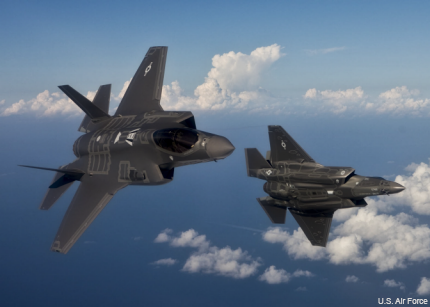Army lab to provide software analysis for Joint Strike Fighter
ARMDEC will independently double-check the F-35’s software systems for safety, airworthiness.

The F-35 Joint Strike Fighter program will soon be getting Army assistance for the safety analysis of the next-generation strike aircraft’s flight software, which is essential to the combat operation of what is the most complex and expensive weapons program in the military’s history.
The Joint Strike Fighter program office selected the Army Aviation and Missile Research Development and Engineering Center’s Software Airworthiness and Safety Lab, or SASL, to perform independent software safety analyses of the plane, according to an Army release.
The F-35’s operational flight program software works as a highly integrated system and is central to managing the propulsion, weapons and logistics systems of the aircraft – meaning that safety, as always, is a top concern.
The SASL team will assess mission systems, weapons systems and pilot systems software for safety and provide recommendations for code issues and safety designs. Funding from the award also will employ five full-time subject matter experts to help the SASL team.
SASL is a part of ARMDEC’s Software Engineering Directorate, which provides software lifecycle support for Army weapons systems. The directorate has conducted software safety and airworthiness support for weapons systems such as the AH-64 Apache, UH-60 Black Hawk and CH-47 Chinook, according to the release.
"The F-35 has over 24 million lines of code and is clearly the most complex weapons system ever designed by the [Defense Department]," said James Lackey, AMRDEC's acting director. "The department's decision to select the Software Engineering Directorate to provide the independent software safety evaluation speaks highly of our expertise, credibility and our past demonstrated successes."
The F-35 Lightning II, being built by Lockheed Martin, is a fifth-generation multirole fighter with advanced stealth, maneuverability and networked capabilities that will be used by the Air Force, Marines, and Navy, as well as at least 10 other countries. But development has been plagued by delays since the initial contract was awarded in 2001. Cost estimates for development now stand at almost $400 billion, and overall costs for the F-35 are expected to total $1.5 trillion over the program’s 55-year lifespan. The F-35 is being flown while under development, though flights have been restricted after an engine fire in one plane in June.
The F-35 will come in three versions: a conventional takeoff and landing (CTOL) variant that will replace the Air Force’s A-10s and F-16s, a short takeoff/vertical landing (STOVL) variant that will replace the Marine Corp’s F/A-18s and AV-8B Harriers, and a carrier variant to replace the Navy’s F/A-18s.
SASL’s software safety analysis represents the Army’s sole involvement in the Joint Strike Fighter Program.
Meanwhile, the flight software needed to run the plane might end up being up to 14 months late, reports Bloomberg, as schedules for software have slipped an average of more than six months a year.
Earlier this year, a General Accountability Office report found that problems in developing and testing mission systems software of the F-35 was the result of delays in software delivery and limited capabilities of delivered software, which ultimately required retesting and fixing of multiple software versions.
Continued delays in flight testing of the aircraft’s critical software might hinder delivery of expected warfighting capabilities to the military services, unless DOD steeply increases funds over the next five years, the report concludes.

